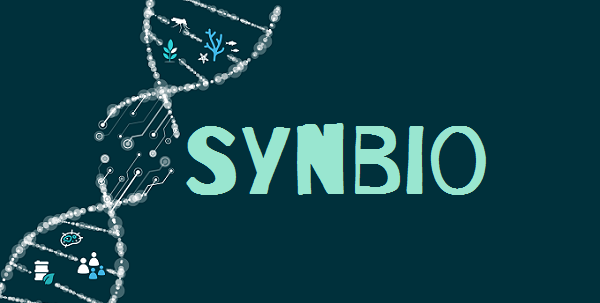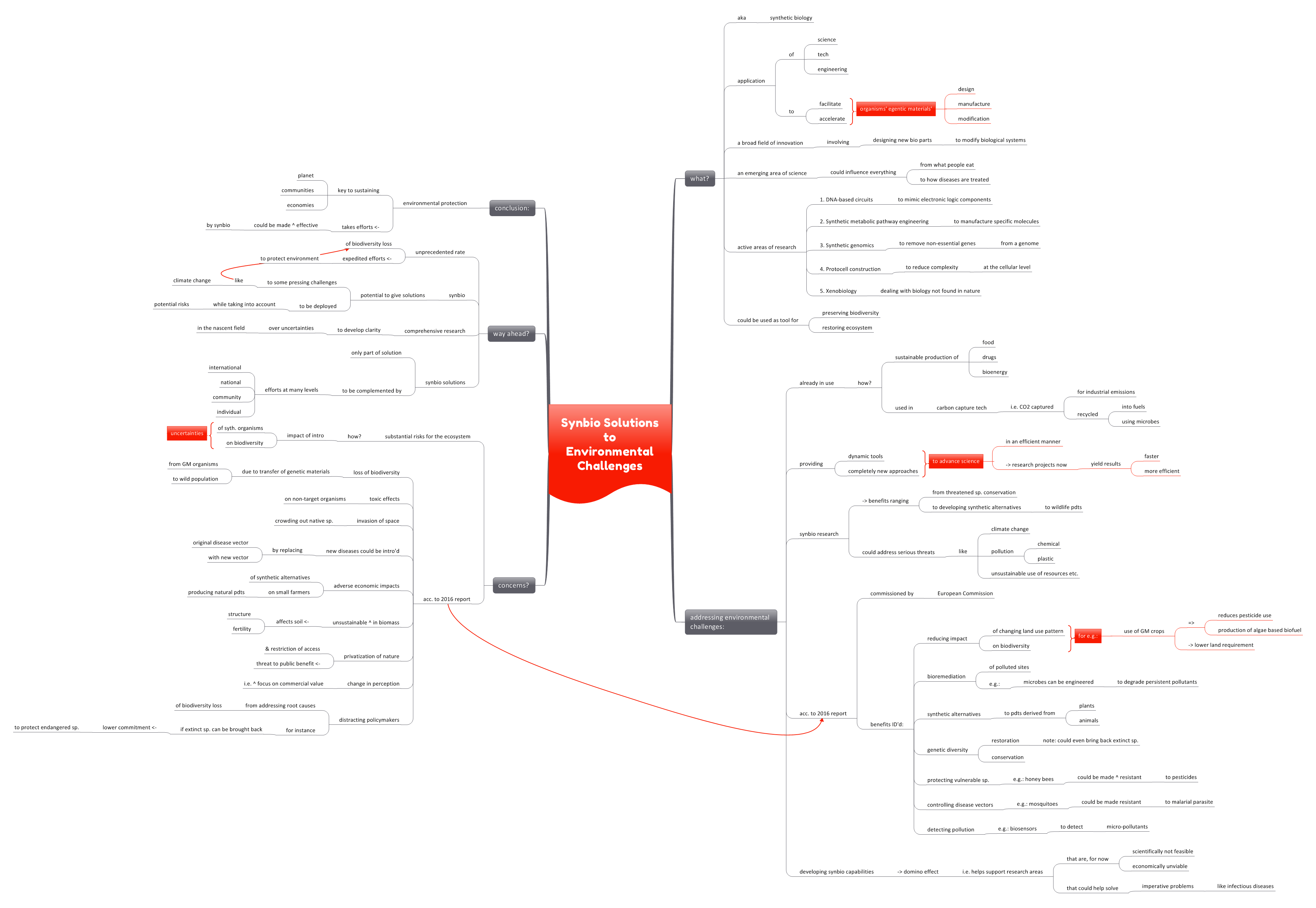Synbio Solutions to Environmental Challenges

What is synbio?
- Synbio or synthetic biology can be understood as the “application of science, technology and engineering to facilitate and accelerate the design, manufacture and modification of genetic materials in organisms”.
- It is a broad field of innovation involving the designing of new biological parts to modify natural biological systems.
- It is still an emerging area of science, but could influence everything from what people eat to how diseases are treated.
- Some of the active areas of research include:
-
- DNA-based circuits to mimic electronic logic components
- Synthetic metabolic pathway engineering to manufacture specific molecules
- Synthetic genomics to remove non-essential genes from a genome
- Protocell construction to reduce complexity at the cellular level
- Xenobiology dealing with biology not found in nature
- In addition to this, environmentalists consider synbio as a potential tool for preserving biodiversity and restoring the ecosystem.
How can it address environmental challenges?
- Synbio is already being used for sustainable production of food, drugs and bioenergy.
- It is being used in carbon capture technology. The carbon dioxide, captured from industrial emissions, is being converted into fuels with the help of microbes.
- Synbio is providing dynamic tools and completely new approaches to advance science in a more efficient manner. As a consequence, research projects are yielding results in a faster and more efficient manner.
- Synbio research could produce benefits ranging from conservation of threatened species to developing synthetic alternatives to wildlife products.
- It could help address serious threats like chemical and plastic pollution, unsustainable use of natural resources, climate change, etc.
- A 2016 report, commissioned by the European Commission, identified environmental benefits from synbio research:
- Reducing impact of changing land use pattern on biodiversity. For instance, use of GM crops would translate into reduced use of pesticides or production of algal-based biofuel production. This would mean a low requirement of land.
- Bioremediation of polluted industrial sites. Eg: microbes can be engineered to degrade persistent pollutants.
- Development of synthetic alternatives to products being extracted from threatened species of plants and animals.
- Genetic diversity restoration and conservation. There is even a prospect of restoring extinct species.
- Protection of vulnerable species. Eg: honey bees could be made more resistant to pesticides.
- Controlling disease vectors. Eg: mosquitoes could be made resistant to malarial parasites.
- Detecting pollution. Eg: biodetectors for sensing micro-pollutants.
- Developing such capabilities could have a domino effect and help support areas of research that are currently scientifically not feasible or economically unviable. Such research could help resolve some imperative problems like infectious diseases.
What are the concerns?
- There is a concern that synbio could create substantial risks for the ecosystem, given the many uncertainties in the implications of introduction of synthetic organisms on biodiversity.
- The 2016 report also identified potentially significant risks:
- Loss of biodiversity due to transfer of genetic material from GM organisms to wild populations
- Toxic effects on non-target organisms
- Invasion of space– crowding out the native species
- Possibility of introducing new diseases by replacing the original disease vector with a new vector
- Adverse economic impacts of synthetic alternatives on small farmers who produce natural products
- Unsustainable increase in biomass leading to deterioration of soil structure and fertility
- Possible privatization of nature and restriction of access could threaten public benefit
- Change in perception of biodiversity i.e. more focus on commercial value
- Distracting policymakers from addressing the root causes of biodiversity loss
- If extinct species could be synthetically restored, policymakers could become less committed to protecting endangered species.
What is the way ahead?
- The unprecedented rate of biodiversity loss calls for expedited efforts for environmental protection.
- Synbio has potential to provide solutions to some of the pressing challenges, including climate change and biodiversity loss. However, its potential risks should be taken into account when deploying these solutions.
- Comprehensive research in the field would develop clarity over the many uncertainties surrounding this nascent field.
- It must be understood that synbio can only be a part of the solution. It must be complemented by efforts at international, national, community and individual levels.
Conclusion
Environmental protection is key to sustaining the planet, our communities and our economies. Synbio can help increase the effectiveness of environmental protection efforts.
Practice Question for Mains
What is synbio? How can it be used in addressing environmental challenges? (250 words)
Referred Sources
If you like this post, please share your feedback in the comments section below so that we will upload more posts like this.


